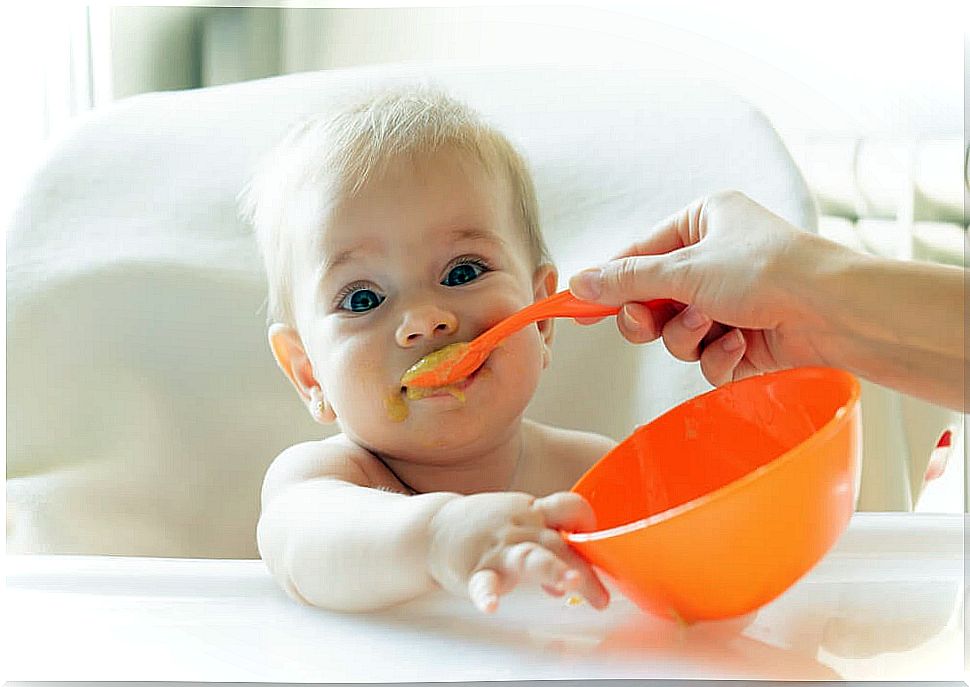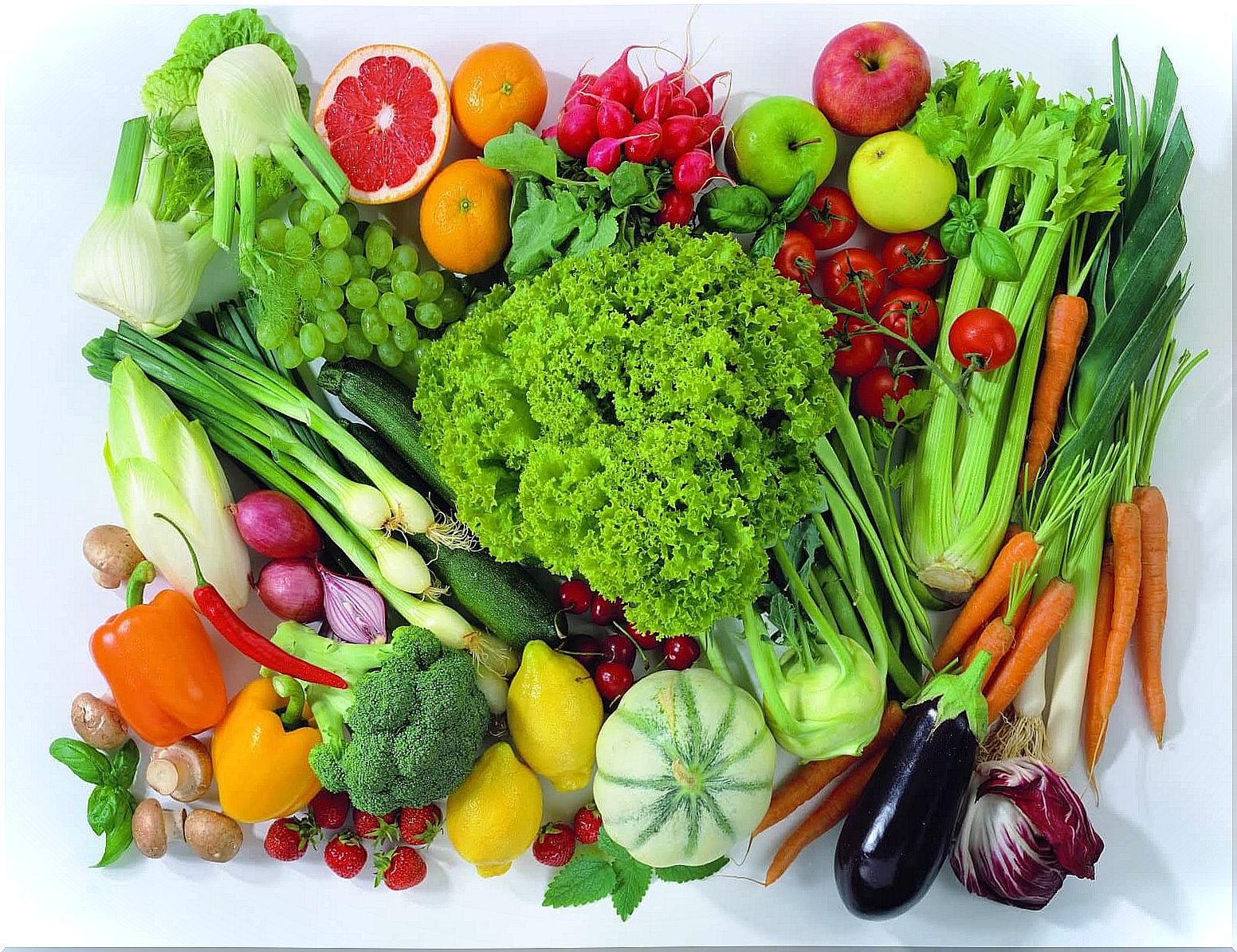How To Prepare Healthy Meals For Your Baby: 10 Options
If you have started with complementary feeding, what we tell you below is perfect for you. We explain how you can prepare healthy baby meals with little effort. Would you like to discover our options?
Food should be included following the recommendations of your pediatrician. It is worth noting that it is during these first moments that the child develops a taste for flavors. For this reason, you should expose your child to a wide variety of flavors.
Of course, you can adapt the recipes to the foods that your child has already tried. Remember that it is usually recommended that, when incorporating foods, you do it one at a time to be able to detect possible food allergies.
Make healthy meals for the baby

Before getting down to work and preparing healthy meals for the baby at home, it is important that you are clear about what foods you can incorporate according to the age of your child. Let’s look at some general suggestions:
- Up to 6 months : the World Health Organization (WHO) recommends exclusive breastfeeding for up to 6 months. In the case of taking a bottle, the incorporation of food can occur between 4 and 6 months.
- Between 6 and 12 months : fruits, vegetables, cereals, legumes, eggs, meat, chicken, fish and olive oil.
- Between 12 and 24 months : soft cheese, yogurt and whole milk.
- From 3 years : nuts, apple in pieces, raw carrot in pieces and any food that can cause a risk of choking.
However, there is no scientific evidence to support the fact of introducing foods in a specific order, but you do have to take some measures with certain foods, such as crushing nuts to avoid choking and suffocation.
Tips for healthy cooking for your child

At the time of buying
- Buy fresh fruits and vegetables : try to use them in a maximum of three days so that they do not lose properties.
- Choose lean meats : A good way to prepare healthy meals for your baby is to buy lean meats to avoid excess fat. If necessary, degrease it before cooking. Consult with your pediatrician about this to discover the best options and quantities.
If you opt for Baby Lead Weaning (the infant feeds himself by bringing the food to his mouth), instead of purees, remember to present soft meats and in small pieces. Be sure to talk to your doctor about your decision so they can advise you.
When it comes to cooking
- Remember to wash vegetables and fruits well, clean your work surface, and use clean utensils for each meal. It is important to avoid cross contamination of food.
- Minimize the use of salt when cooking : The amount of salt should really be minimal so that the kidneys of infants do not pose a danger to their health, as pointed out in the book How to feed the baby .
- Choose olive oil over other fats : olive oil provides monounsaturated fatty acids, unsaturated fatty acids and also vitamin E. Its consumption is recommended from the beginning of complementary feeding, always in small doses and raw.
- The best cooking options are boiled, oven and skillet, as long as you use a minimum of fat.
Other ideas
- Use the cooking broth : the cooking broth from vegetables, for example, can be wonderful for cooking rice or other cereals such as quinoa. It will give a different (and tasty) flavor to the cereals. Do not waste it!
- Add milk to the purees : if you are preparing your child’s porridge and you notice that it is too solid, instead of incorporating water, opt for milk. You can use the milk that your child consumes regularly, even breast milk.
- Freeze unused food for the day : a good idea is to use an ice bucket to freeze small portions of food.
10 healthy meal ideas for your baby

Meals for the baby
- Rice with chicken and vegetables : choose the vegetables of your choice and boil them together with the chicken in small pieces until they are cooked. Withdraw and reserve. Cook the rice in the cooking broth. When it’s ready, if you want, you can run it through the blender and puree, mash with a fork, or serve chunks.
- Zucchini Soup : Boil a large potato, a large zucchini, and half an onion (all vegetables must be peeled and cut) until cooked. Use the food processor or a fork, depending on the texture you want.
- Lentils with vegetables : boil the lentils together with a peeled and chopped carrot, half a chopped onion and two peeled and seedless tomatoes. When the dish is ready, you can mash or serve as is.
- Short noodles with tomato sauce : Make a sauce with onion, tomato and carrot in small pieces to add nutrients to the short noodles.
- Vegetable omelette : If you have already incorporated the egg, you can prepare an omelette with a variety of boiled chopped vegetables and an egg. Easy and delicious!
- Vegetable puree with fish : boil a zucchini, a small potato, a leek and half an onion along with eighty grams of lean fish without bones. When everything is cooked, go through the blender.
- Meat and Vegetable Balls : These meatballs can be frozen to always have healthy baby meals ready in a minute. Boil a carrot, a leek, 40 grams of green beans, and 40 grams of lean meat. Remove the excess water, crush and form your meatballs. Instead of frying, cook in the oven.
Baby desserts
- Apple, pear and banana porridge : cook an apple together with a pear, both peeled, seeded and cut into cubes. When they are tender, remove them and blend together with the banana. If you want a more liquid fruit porridge, add the milk that your child drinks regularly. Don’t add sugar.
- Banana and Orange : This dessert is super easy. Press a banana with a fork and mix with the juice of half an orange. Clever!
- Yogurt with fruits : include a fruit porridge inside the yogurt or, simply, small pieces of some fresh fruit. Your child will love it!
In short, preparing healthy meals for your baby is not complicated. You just have to choose healthy ingredients and opt mainly for fresh fruits and vegetables, lean meats and whole grains, and cook them without adding fat, excess sodium or sugars.
Remember that your child’s stomach is small, therefore, you should not force him to eat. What seems like little food to you may be more than enough for him. Doctors recommend letting the child guide the intake according to their needs.









